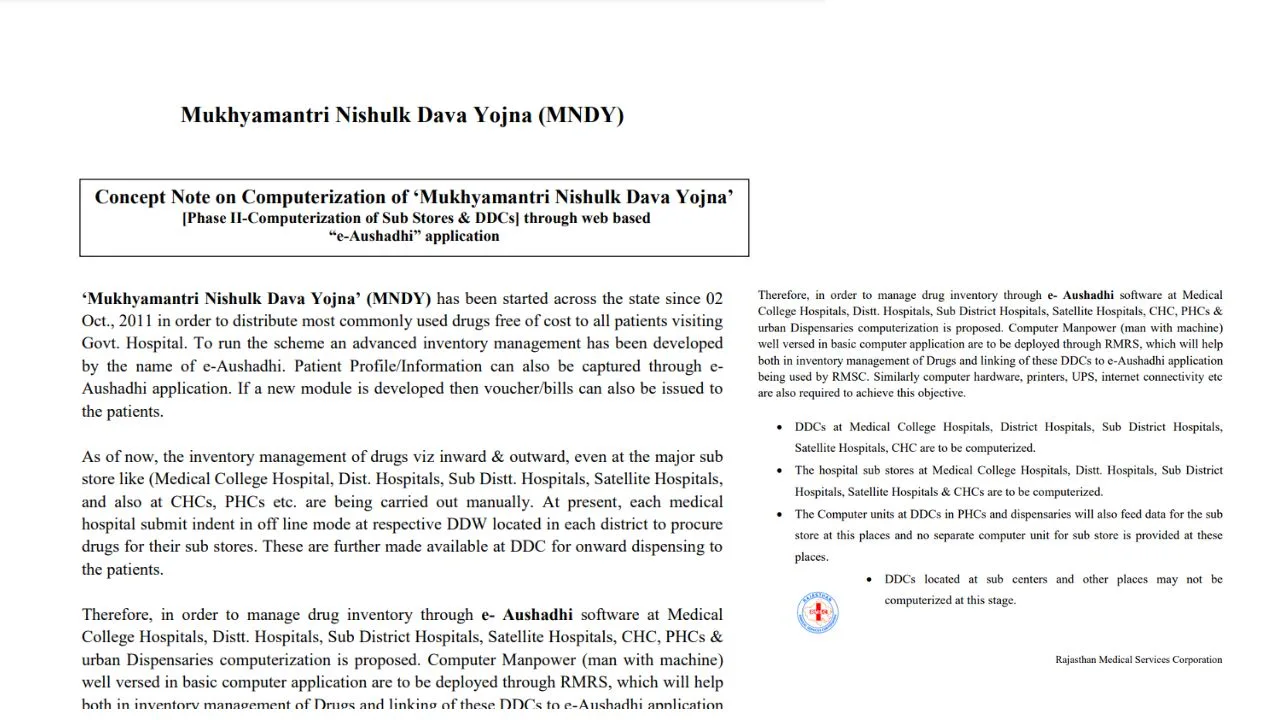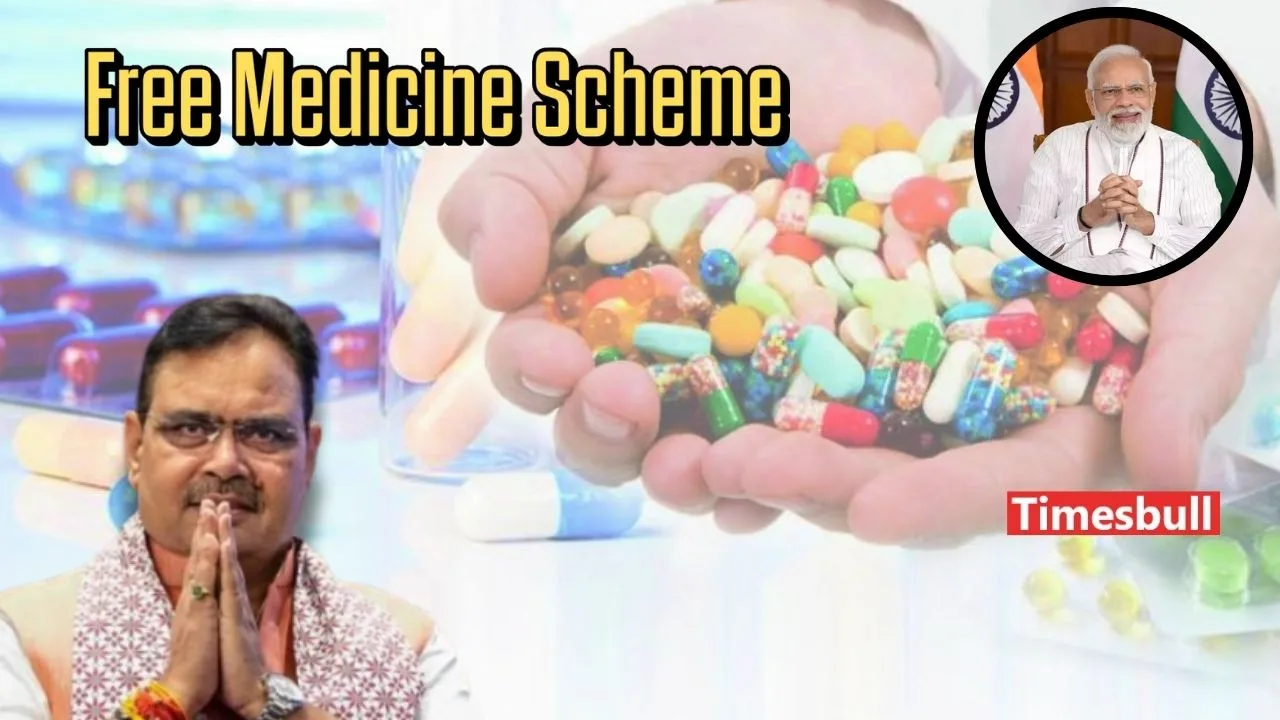Recently, the government has taken a significant step to make the Free Medicine Scheme more effective. In a meeting of the Technical Advisory Committee, 390 new medicines were tested. These medicines will soon be added to the essential medicines list.
The Free Medicine Scheme means that the government provides essential medicines required for treatment at no cost. This scheme is operated through government hospitals and health centres.
Its objective is to provide full treatment support to poor and needy individuals, ensuring they are not deprived of health services due to financial constraints.
Free Medicine Scheme: Highlights from the meeting:
- Expansion of medicines: Under this scheme, medicines will now be made available for the treatment of a broader range of diseases.
- Digital transparency: The supply and availability of medicines are being ensured through e-medicine software.
- Budget increase: The budget for the scheme for the financial year 2024-25 has been set at ₹2,122 crore.
Neha Giri, Managing Director of RMSCL (Rajasthan Medical Services Corporation Limited), mentioned that this scheme will be implemented not only in Rajasthan but also in other states. This initiative will improve the availability of medicines in rural areas. This scheme has been designed for lakhs of people who are unable to afford expensive medicines. Let’s break it down in simple terms so you can fully benefit from it.
About the Scheme
The Rajasthan Mukhyamantri Nishulk Dava Yojana was launched on 2nd October 2011 by the then Chief Minister Ashok Gehlot. The scheme has two components:
- Free Medicines: To provide commonly used essential medicines free of cost to patients visiting government healthcare institutions (introduced on 2nd October 2011).
- Free Tests: To provide free medical tests (introduced on 7th April 2013).
To ensure its successful implementation, the Rajasthan Medical Services Corporation Limited (RMSCL) was incorporated as a Public Limited Company.
Since its launch, the scheme has benefitted approximately 67 crore patients, covering a record 712 medicines.
Rajasthan’s free medicine scheme is a complete scam.
795 samples of critical drugs like pain killer, antibiotics, hormonal drugs etc. failed quality tests in 5 years, yet doctors get blamed when treatments fail.
How are they supposed to save lives with fake medicines?
This… pic.twitter.com/HXHmYpSNwy
— यमराज (@autopsy_surgeon) November 26, 2024
Benefits of the Free Medicine Scheme
- Free medicines: The government has created a list of 1,240 types of medicines and 428 surgical supplies, available based on the doctor’s prescription.
- Available to everyone: The scheme is available to all, especially those unable to afford expensive medicines.
- Digital tracking system: The use of e-medicine software ensures the availability and quality of medicines, preventing any shortages.
- Thousands of patients benefit: About 4.5 lakh patients benefit from this scheme every day.

How to Apply for the Free Medicine Scheme
- Go to a government hospital: Visit your nearest government hospital or health center and consult a doctor.
- Obtain a prescription: Get a prescription listing the medicines specific to your condition.
- Collect medicines from the Free Medicine Center: Present your prescription at the hospital’s free medicine counter and collect the medicines.
- Online option (if available): In some states, you can apply for medicines via the e-medicine portal or mobile app.
Eligibility for the Free Medicine Scheme
- Must be an Indian citizen.
- Families living below the poverty line (BPL) are prioritized.
- All citizens receiving treatment in government health institutions are eligible.
I appreciate the efforts of the medical fraternity and health department for successful implementation of Mukhyamantri Nishulk Dava Yojana. Our goal has been to impart quality health services to the people of the state and we will continue working towards this. #Rajasthan pic.twitter.com/D70HbdSxee
— Ashok Gehlot (@ashokgehlot51) May 29, 2019
Required Documents
- Aadhaar card
- Doctor’s prescription
- Residence certificate
- Ration card (if applicable)
Free Medicine Scheme Figures and Budget
- Daily beneficiaries: More than 4.5 lakh patients benefit from this scheme every day.
- Budget allocation: The government has set aside ₹2,122 crore for the financial year 2024-25.
- Inclusion of new medicines: The process of including 390 new medicines is ongoing.
Challenges of the Scheme
- Lack of awareness about the scheme in rural areas.
- Delays in the supply of medicines in some regions.
- Complexities in using the digital portal.
Government’s Future Vision
The government is working towards strengthening the scheme by:
- Opening more health centers.
- Adding new medicines to the scheme.
- Enhancing the accessibility of digital services.
Related Articles You Might Enjoy:
- Israel vs iran war: Netanyahu issues warning, Iran issues counter alert to Israel
- This RCB batsman is in form before IPL 2025 auction, crores will be bid for him
- HMPV Alert – First Case Reported in Bengaluru, Govts issue advisory, Check Here Symptoms
- Buy Best sneakers for Mens under 1000 rupees on Amazon
- Sadhvi Harsha Richaria Continued Crying & Leaves Mahakumbh, watch Emotional Video
